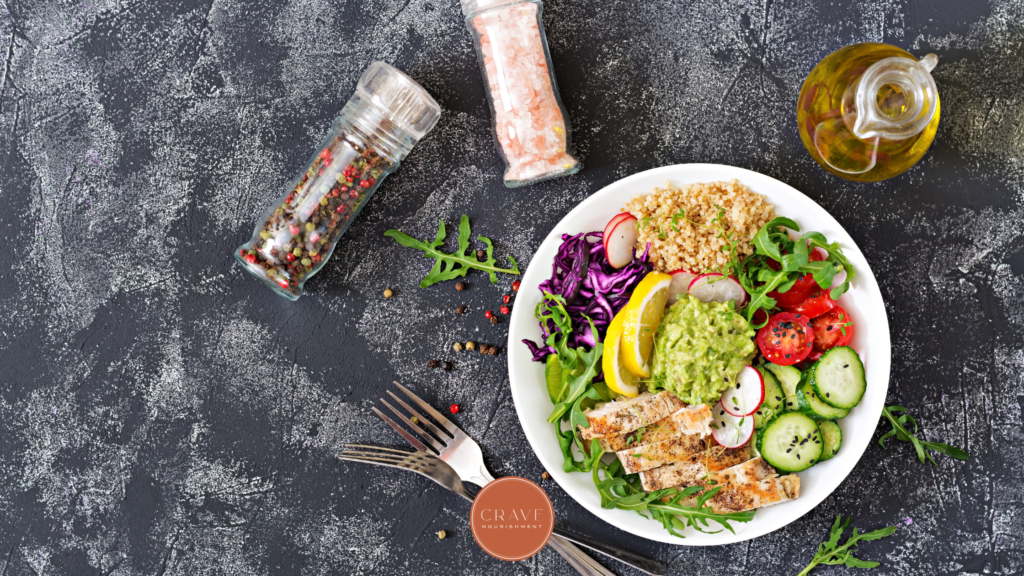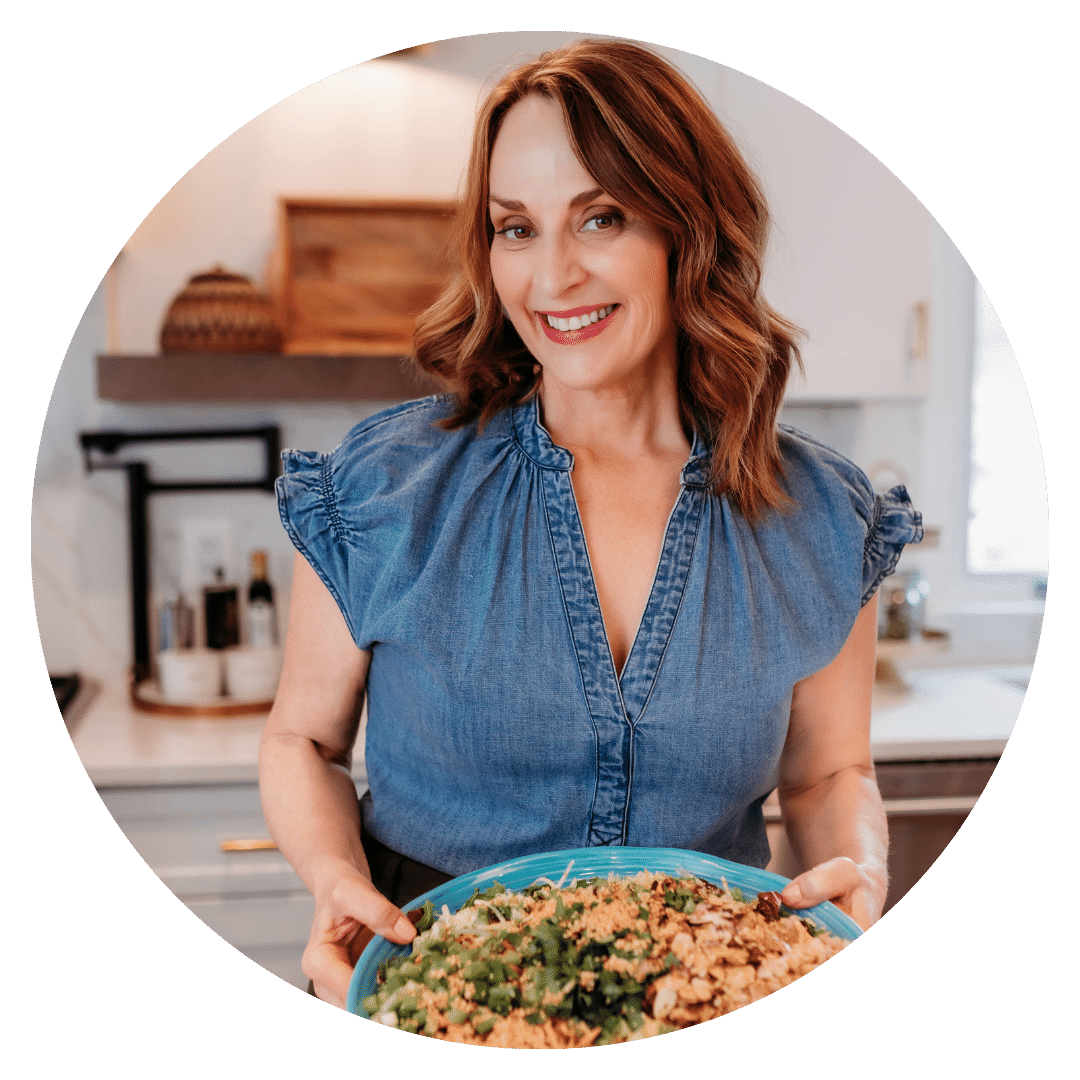Are you feeling overwhelmed by all of the nutrition noise out there? It seems like everywhere you look, there is a new expert with specific, and strict recommendations to achieve optimal health. Today we’re cutting through the clutter and getting back to basics with proper nutrition. Let’s talk about the simple formula I use to build a plate that supports metabolism and helps me feel my best!
Let’s Get Back to Basics with Proper Nutrition
There is so much conflicting information out there about what to eat and how much of it. While we are all unique individuals with different needs, I think that this topic has become a little more complicated than it needs to be. For the most part, there is a basic formula that you can follow to support your metabolism and overall health. You will need to fine-tune it and tweak based on individual needs, but overall – this method is a winner! The best news? It’s not complicated, super simple to adapt, and easy to remember. Let’s dive in!
Start with Vegetables & Fruit
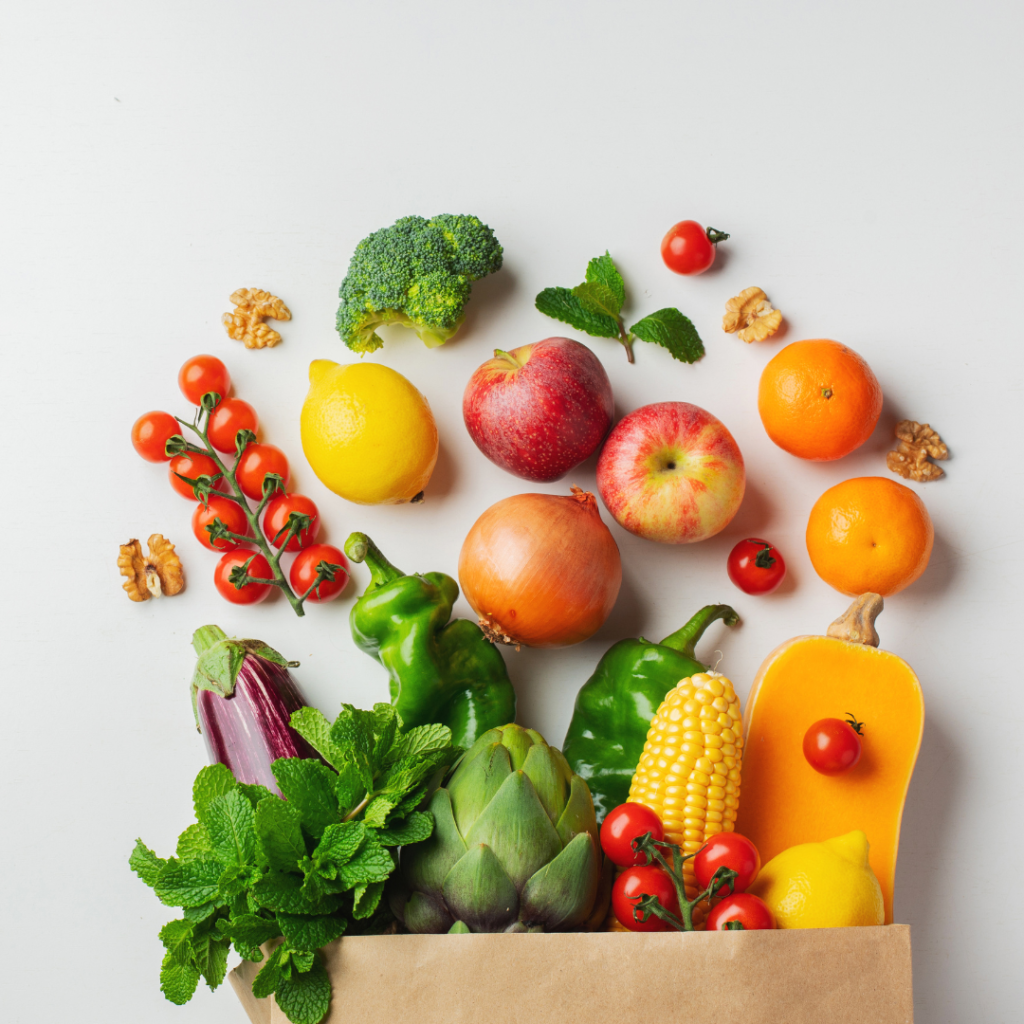
When building a plate that will support your metabolism and help you reach your health goals, vegetables and fruits should be the star. Half of your plate should come from this category, with most of it being non-starchy vegetables. These foods are filled with fiber, vitamins, and nutrients that your body needs to fuel up and build immunity. Fruits and vegetables also feed your gut microbiome, helping to maintain a healthy GI system and reduce inflammation in the body.
Another one of my favorite benefits of eating half a plate of produce is the satiety that it promotes. When you switch to this style of eating, you will notice that you stay full and satisfied for much longer periods of time. This is due to the healthy fiber content and volume of these foods. For anyone who’s ever felt that “always hangry” feeling that comes along with restrictive dieting, this is a welcome change!
I know that this can feel daunting at first if you’re not used to eating a variety of vegetables and fruits. Don’t let that hold you back! Just aim to get 1% better each day and before you know it, you will be enjoying more produce than ever before.
Creative Ways to Include More Fruits & Veggies
Here are a few of my favorite ways to boost intake of vegetables and fruit.
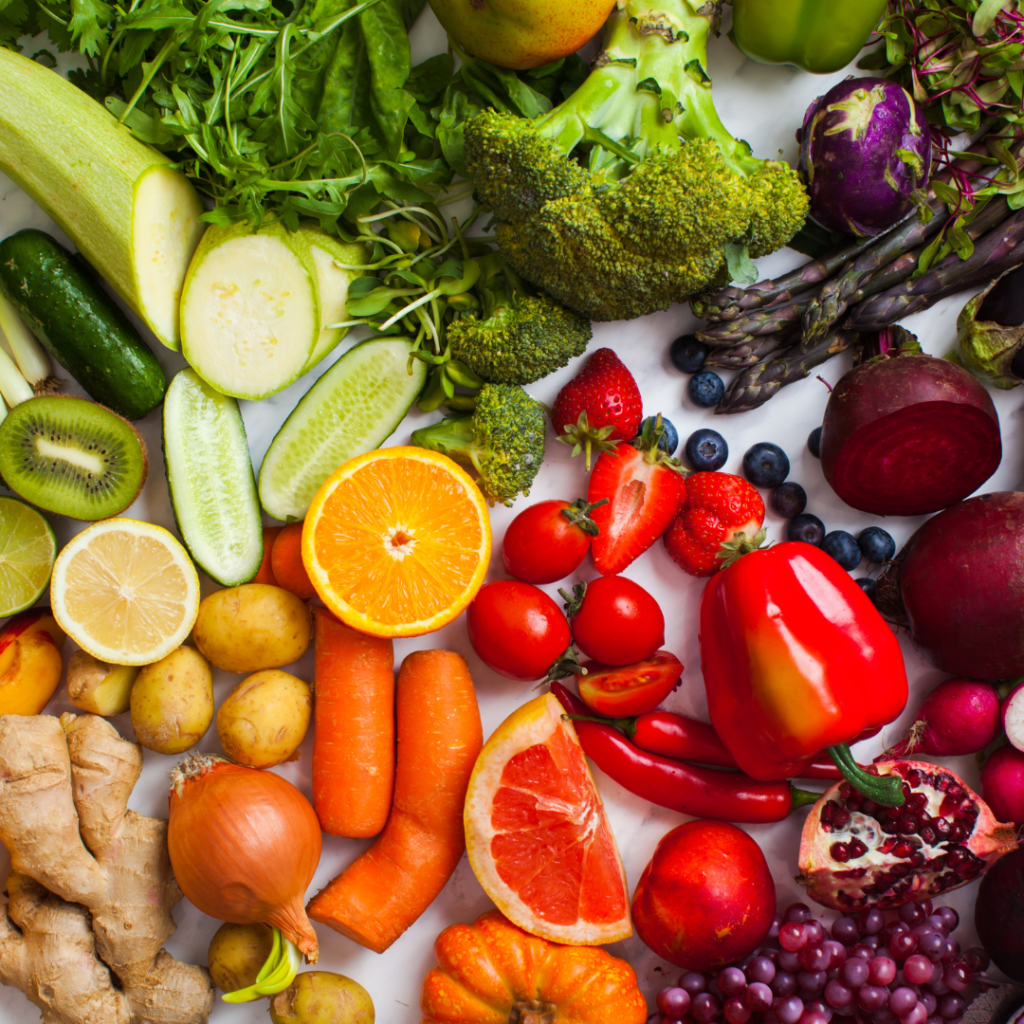
- enjoy a side salad with your meal
- have some vegetable soup with your main entree
- add chopped veggies to egg scrambles and omelets
- cut up carrots, cucumber, bell pepper, and other veggies to enjoy with hummus
- roast a big tray of veggies on the weekend to add to your lunches during the week
- add fresh salsa, shredded cabbage, and other crunchy veggies to tacos, burritos, and bowls
- try a new fruit each week at the grocery store and challenge yourself to enjoy it as a sweet treat after your meal
The key to being successful with this part of the plate is to have fun with it! Mix it up and try new things to keep your vegetables interesting! For example, I absolutely love roasted vegetables and could eat them daily. I keep them interesting by using different spice blends each week. This makes eating my vegetables more fun and tasty!
When it comes to fruit, I love pairing it with my breakfast as well as an after-dinner treat. Fresh berries are my go-to in the mornings as a naturally sweet accompaniment to chia seed pudding, overnight oats, or yogurt bowls. I also love them all on their own alongside an omelet! I like to buy frozen fruit to keep on hand to make smoothies, “nice” cream, and other frozen treats. It’s often much more economical and easy to use.
Power Up with Protein
Next up, protein! You probably already know how important protein is for tissue repair, growth, and retention. We need adequate protein to keep our muscles, bones, skin, and other tissues strong. It’s also key for maintaining blood sugar levels by slowing down the absorption of glucose from food. This prevents that dreaded blood sugar spike and crash feeling. Protein also helps promote feelings of satiety and better weight management. All in all, it’s a nutrition superstar and absolutely essential in supporting metabolism.
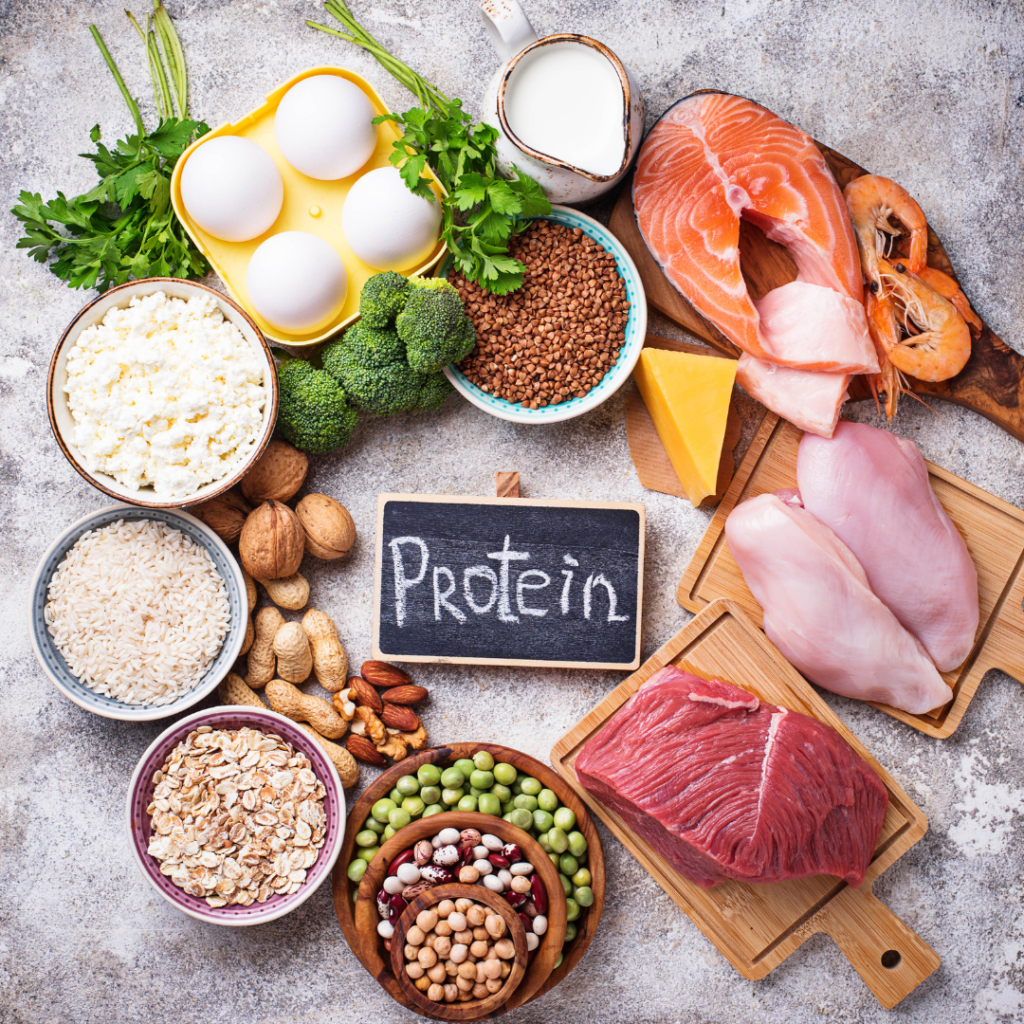
When it comes to how much to put on your plate, aim for 1/4 of your plate. A general guideline is about 25-30 grams per meal for most women. Remember, everyone is different so this can vary by age, metabolic health, and activity level.
Ideal sources of protein include whole, real foods. I’m talking about single-ingredient protein sources, not protein powders. While these aren’t inherently bad, they are highly processed and often filled with inflammatory additives and sweeteners. It’s okay to supplement here and there with protein powders and bars but keep in mind that these aren’t usually as satiating as single-ingredient protein sources. This can lead to constant hunger and cravings. This is why I advise clients to aim to get the majority of their protein from whole food sources. Some great examples include:
- chicken and turkey
- fish and shellfish
- lean cuts of beef
- beans and lentils
- tofu and tempeh
- yogurt and cottage cheese
- eggs
Try to get a mix of both animal and plant-based protein if you’re an omnivore. And don’t forget, most plants have some protein, so if you’re eating lots of vegetables as suggested above, you’re getting a bit of protein there too!
Ancient Grains, Nuts, and Seeds
Last, fill the final 1/4 of your plate with a mix of ancient grains (if tolerated) as well as nuts and seeds. Keep in mind that these foods are more calorically dense and easy to eat a lot of. It’s important to be mindful of the types we eat and how much of them, especially if your goal is to work towards a more comfortable body weight.
When it comes to grains, it’s best to avoid refined varieties such as white rice, white pasta, and white bread. Instead, opt for whole grains and ancient grains such as quinoa, farro, millet, oats, and buckwheat. A high-quality, whole-grain sourdough bread is also a healthy choice in moderation. The key is to focus on sources of grain that include fiber and keep your serving sizes at about 1/4 or less of your plate at each meal.
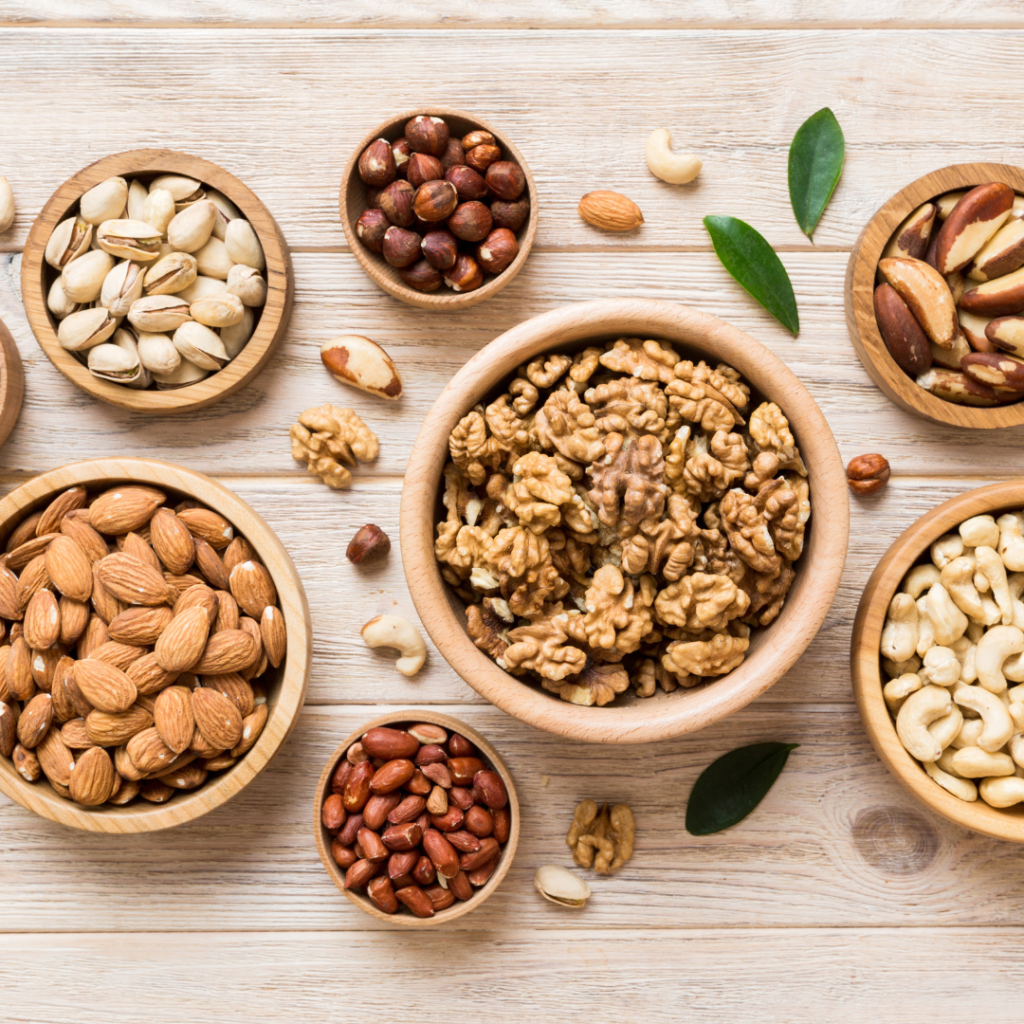
Nuts and seeds are a wonderful source of nutrition and can also be added to this section of your plate. There are tons to choose from but some of my favorites include:
- Cashews
- Almonds
- Pine nuts
- Pumpkin seeds/pepitas
- Brazil nuts
- Walnuts
- Chia seeds
- Hemp seeds
- Flax meal
Use these sparingly as they are calorically dense, but packed with nutritional value. I aim to include about 1-2 tablespoons of chia seeds or flaxseed per meal OR 1 oz (1/4 cup) of nuts. This could look like 1 tablespoon of chia seeds in your morning yogurt, 1 oz chopped walnuts in your chicken salad at lunch, and 1 tablespoon of pepitas sprinkled over some roasted vegetables at dinner for a flavorful crunch. The idea here is to enjoy them in amounts that will be supportive of metabolism, without overdoing it.
Putting it All Together

And there you have it friends! I told you this was simple! Following this simple formula will ensure you get a good balance of macronutrients, fiber, and key vitamins and minerals daily. In review, I recommend 1/2 of your plate being vegetables and fruits, 1/4 of your plate being protein, and 1/4 of your plate ancient grains, nuts, and seeds. This is such an easy way to create a satisfying, filling, and nourishing plate at mealtimes. No constant counting or obsessing necessary. Some other important things to consider for better metabolic health include:
- Prioritizing healthy fats
- Choosing anti-inflammatory oils
- Ensuring adequate hydration each day
- Healthy lifestyle choices such as staying active and strength training
If you’d like a quick reference guide to help you remember this plate-building method, I’ve got a treat for you! I’ve got a free printable plate guide to help you build enjoyable, satisfying meals to support your metabolism. Click here to have it sent directly to your inbox. There you’ll get a visual for this formula as well as recommendations for the addition components mentioned above. Happy Eating Friends!
